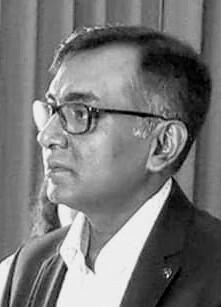Time management is very much important in IIT JAM. The eduncle test series for IIT JAM Mathematical Statistics helped me a lot in this portion. I am very thankful to the test series I bought from eduncle.
Nilanjan Bhowmick AIR 3, CSIR NET (Earth Science)- UGC NET
- English
Do provide key information about elaine showalter's towards a feminist poetics
do provide key information about Elaine Showalter's towards a feminist poetics
- 0 Likes
- 3 Comments
- 0 Shares
-
![comment-profile-img]() >
>
-
![comment-profile-img]() >
>
Deb dulal halder Halder
![best-answer]()
Showalter coined the term 'gynocritics' to describe literary criticism based in a feminine perspective. Probably the best description Showalter gives of gynocritics is in Towards a Feminist Poetics: In contrast to [an] angry or loving fixation on male literature, the program of gynocritics is to construct a female framework for the analysis of women’s literature, to develop new models based on the study of female experience, rather than to adapt male models and theories. Gynocritics begins at the point when we free ourselves from the linear absolutes of male literary history, stop trying to fit women between the lines of the male tradition, and focus instead on the newly visible world of female culture.
-
![comment-profile-img]() >
>
Deb dulal halder Halder
In Toward a Feminist Poetics Showalter divides feminist criticism into two sections: •The Woman as Reader or Feminist Critique : ‘the way in which a female reader changes our apprehension of a given text, awakening it to the significance of its sexual codes’; historically grounded inquiry which probes the ideological assumptions of literary phenomena’; ‘subjects include the images and stereotypes of women in literature, the omissions of and misconceptions about women in criticism, and the fissures in male–constructed literary history’; ‘concerned with the exploitation and manipulation of the female audience, especially in popular culture and film, and with the analysis of woman–as–sign in semiotic systems’; ‘political and polemical’; like the Old Testament looking for the errors of the past.
Do You Want Better RANK in Your Exam?
Start Your Preparations with Eduncle’s FREE Study Material
- Updated Syllabus, Paper Pattern & Full Exam Details
- Sample Theory of Most Important Topic
- Model Test Paper with Detailed Solutions
- Last 5 Years Question Papers & Answers
Sign Up to Download FREE Study Material Worth Rs. 500/-










 >
>








Deb dulal halder Halder Best Answer
Showalter traces the history of women's literature, suggesting that it can be divided into three phases: The Feminine phase (1840–1880): Showalter sees the first phases taking place from roughly 1840 to 1880; she calls this “the Feminine phase” and declares that it is characterized by “women [writing] in an effort to equal the intellectual achievements of the male culture… The distinguishing sign of this period is the male pseudonym… [which] exerts an irregular pressure on the narrative, affecting tone, diction, structure, and characterization.” The Feminist phase (1880–1920): The second, Feminist phase follows from 1880 to 1920, wherein “women are historically enabled to reject the accommodating postures of femininity and to use literature to dramatize the ordeals of wronged womanhood.” This phase is characterized by “Amazon Utopias,” visions of perfect, female-led societies of the future. This phase was characterized by women’s writing that protested against male standards and values, and advocated women’s rights and values, including a demand for autonomy. The Female phase (1920— ) is one of self-discovery. Showalter says, “women reject both imitation and protest—two forms of dependency—and turn instead to female experience as the source of an autonomous art, extending the feminist analysis of culture to the forms and techniques of literature”. Significantly, Showalter does not offer a characteristic sign or figure for the Female phase, suggesting a welcome diversity of experience that is too broad to be encompassed in a single image.